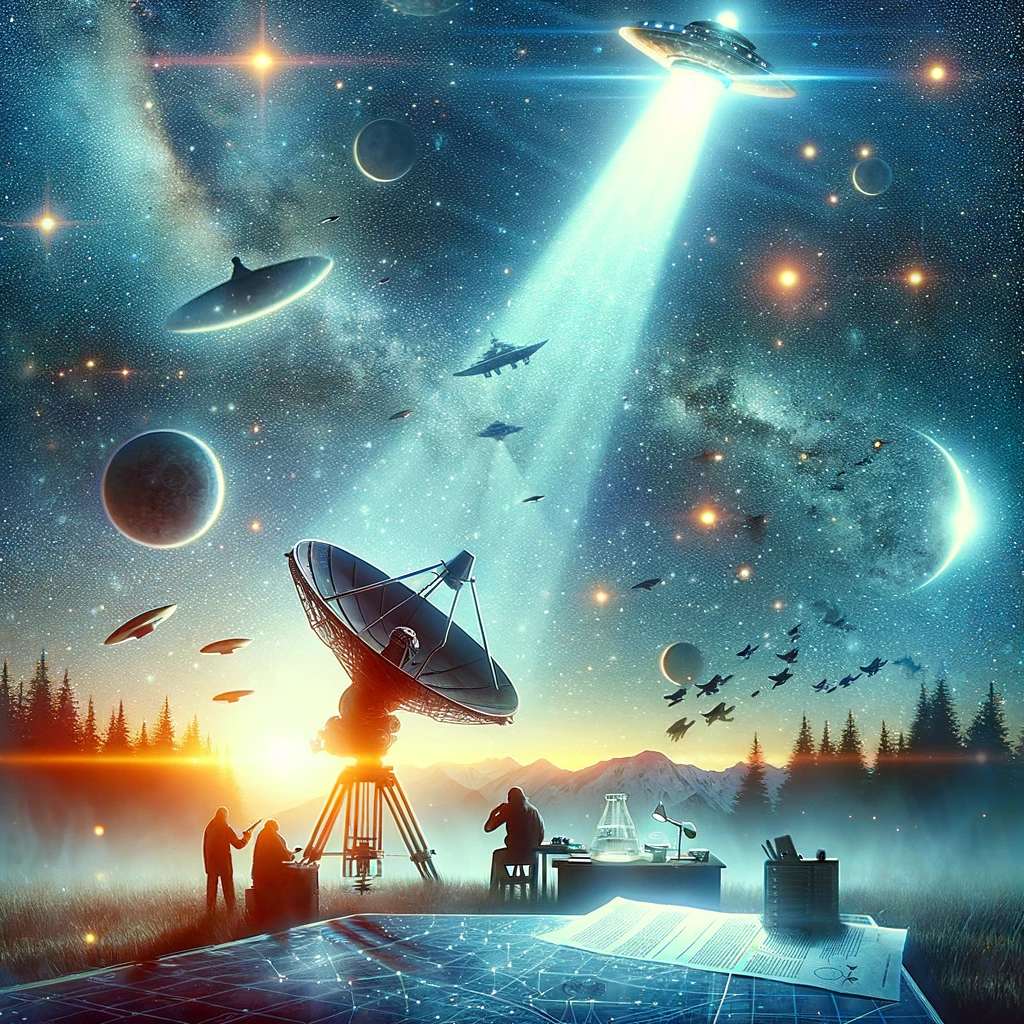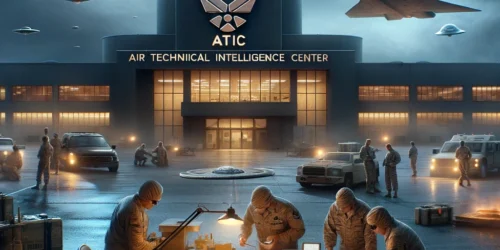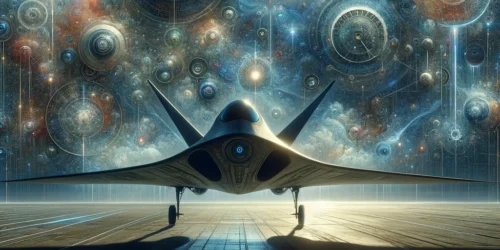NASA: World, We Have a Problem

World, we have a problem, echoing the famous NASA statement from the Apollo 13 mission, ‘Houston, we have a problem.’ This phrase, originally communicated to report a significant technical issue to mission control in Houston, has become widely recognized to signal the onset of an unexpected problem.
There’s a critical view that scientists, bureaucrats, and officials sometimes act as if they hold all the answers, selectively sharing only what serves their agenda. This perspective argues that NASA’s reliance on conventional science to explain the vast complexities of the universe is too narrow. It suggests that there are many valid ways to understand our reality that go beyond current scientific frameworks, which NASA might struggle to fully grasp or openly share with the public.
At times NASA was on the right track. Astrobiology and Christian Doctrine looked at the intersection of astrobiology and theology, particularly within Christianity, in light of NASA’s involvement in funding a program at Princeton’s Center for Theological Inquiry. The program, which included religious scholar Rev. Dr. Andrew Davison among its participants, explored how the discovery of non-human intelligent life might intersect with and impact religious beliefs and doctrines. Davison’s work, and the broader program, reflects on the preparedness of religious individuals to integrate such discoveries into their faith, suggesting a potentially harmonious relationship between scientific discovery and theological reflection.
Another example is NASA’s discovery of dimethyl sulfide (DMS) on exoplanet K2-18b using the James Webb Space Telescope (JWST), indicating potential biological processes similar to those on Earth. This finding, published in The Astrophysical Journal, suggests the presence of life-supporting conditions on K2-18b, located 124 light years away in the Leo constellation. The JWST’s advanced capabilities have allowed for this significant detection, contributing to the ongoing exploration of habitable exoplanets.
A big step backwards was “Where is the Evidence?” which features a discussion on Unidentified Aerial Phenomena (UAPs) and extraterrestrial life, highlighting NASA Administrator Bill Nelson’s call for tangible proof amidst claims by David Grusch about the US government’s possession of UAPs and extraterrestrial artifacts. Nelson’s demand for evidence underscores the skepticism and demand for scientific rigor in validating such claims within NASA’s investigative framework on UAPs.
Congressman Tim Burchett’s discussed his concerns about the government’s secretive approach towards Unidentified Aerial Phenomena (UAP), emphasizing the need for transparency and the frustration over potential billions spent on UAP research since 1947 without public disclosure. Burchett plans to compile a confidential list of witnesses for hearings on UAPs, highlighting past instances where potential witnesses were dissuaded from testifying, specifically mentioning NASA’s role in discouraging witness testimonies. This reflects his commitment to uncovering the truth amidst ongoing secrecy.
The “NASA Unidentified Anomalous Phenomena May 31, 2023 Meeting” outlined NASA’s efforts to scientifically investigate UAPs. This includes redefining UAPs for clarity, conducting independent studies separate from military projects, and utilizing scientific methodologies to improve data quality and analysis. The initiative, led by the Science Mission Directorate, focuses on transparency and public engagement in the research findings.
NASA Unidentified Anomalous Phenomena Independent Study Team Report presented on September 14, 2023 featured key NASA figures, aimed to underscore transparency in UAP research. It highlights NASA’s efforts, initiated in 2022, to scientifically study Unidentified Anomalous Phenomena (UAP). The decision to disable comments on the video prompted debate over NASA’s engagement with public discourse on the subject.
“What is Hiding on the Moon?” raises questions about the discrepancy between the technological advancements achieved through NASA’s Apollo missions and the current resolution of lunar images, such as those captured by the Lunar Reconnaissance Orbiter (LRO). It discusses the expectations for clearer, more detailed images that could reveal traces of past human activity on the moon, and looks into the challenges of achieving such high-resolution imagery despite significant advancements in space exploration technology.
Donna Hare, a former NASA contractor, shared her experiences regarding UFO secrecy at NASA, including encounters with UFO photographs being airbrushed and a culture of silence about extraterrestrial sightings by Apollo astronauts. Her testimony highlights the depths of secrecy and the potential implications of such information being withheld from the public.
John Glenn, the first American to orbit Earth on the Friendship 7 mission, and his observations of small, luminous particles in space, which led to speculation about spherical UFOs. These observations added a layer of mystery to his historic mission. Glenn’s contributions to space exploration extended beyond his initial orbit, including a return to space at age 77 on the STS-95 mission. His experiences fuel discussions on astronauts’ encounters in space.
Charlie Duke, a former Apollo 16 astronaut, who shared his views on UFOs and spirituality in an interview with Glenn Beck. Duke, known for his skepticism about alien life, suggests that alleged alien encounters could be demonic deceptions. He credits his Christian faith for providing a new perspective on these phenomena, emphasizing a spiritual transformation post his lunar mission that brought peace to his life and family. Duke’s journey from NASA to personal faith highlights the complex interplay between science, spirituality, and the unknown.
Gordon Cooper, a Mercury Seven astronaut, and his experiences with UFO sightings, starting with a 1951 incident as a military pilot in Germany. Cooper’s claims extend to his NASA tenure, including witnessing UFOs and advocating for the investigation of extraterrestrial life. His experiences contribute to the ongoing debate about UFOs and their implications for space exploration and security.
Buzz Aldrin, an astronaut from the historic Apollo 11 mission, has publicly shared his encounter with a UAP (Unidentified Aerial Phenomena) during the mission to the moon in 1969. He observed something moving alongside their spacecraft, which was visible for several minutes before vanishing. Aldrin advocates for further research into UAPs to understand them better, emphasizing the need for more data and collaborative efforts between scientists and government agencies.
The Space Shuttle STS-48 Incident in 1991 during the Discovery mission involved mysterious sightings captured on video, showing objects moving in an unusual manner after a flash of light. While there was speculation about these objects being UFOs, NASA explained them as ice particles influenced by the shuttle’s engine jets. This incident underscores the interpretative challenges of space visuals and the distinction between anomalous and explainable phenomena in space.
“Dark Mission: The Secret History of NASA” by Richard C. Hoagland and Mike Bara looks into controversial claims about NASA, suggesting it operates with secret agendas beyond its public scientific mission. The book alleges the existence of artificial structures on the moon, ties between NASA and Freemasonry, and the manipulation of space images to conceal extraterrestrial evidence. These provocative ideas challenge conventional views of NASA and have sparked significant discussion among those interested in space-related conspiracy theories.
Does NASA know about a secret space program allegedly developed with the help of friendly, human-looking Nordic extraterrestrials. Various researchers and individuals, including Dr. Michael Salla and Corey Goode, have contributed to this narrative, suggesting collaboration between these extraterrestrials and the US Navy.
Gary McKinnon, a Scottish systems administrator who, driven by his interest in UFOs, hacked into NASA and other US government systems in the early 2000s. He sought evidence of UFOs and advanced technology, leading to one of the most significant cybercrimes related to UFOs and cybersecurity. McKinnon’s actions, including his claims of discovering evidence related to secret space programs and extraterrestrial technology, raise questions about government transparency and the existence of hidden scientific advancements.
There appears to be unusual collaboration between NASA and Lockheed Martin at White Sands Missile Range, highlighting the peculiar mix of aerospace exploration and military defense operations. It points out the contrasts in objectives and organizational cultures between the civilian space agency NASA and the defense contractor Lockheed Martin, especially given White Sands’ military testing background. This partnership raises questions about the alignment of their missions and the reasons behind choosing such a militarized location for their collaborative efforts.
“Evil Spirits aka Demons” explores the notion that what are often considered to be extraterrestrial or UFO phenomena might actually be interdimensional beings with malevolent intentions, possibly demonic in nature. It looks into historical, spiritual, and occult contexts, suggesting these beings can manipulate reality and human perception. The piece also touches on the controversial Apollo 20 mission, which is not officially recognized by NASA, where astronauts reportedly discovered alien technology on the moon, further complicating the narrative between scientific exploration and supernatural theories.
In “Where Do We Go From Here?”, Robert Dean, a retired Command Sergeant Major, shares his perspective on UFOs and extraterrestrial life. Dean discusses his experiences and the influence of extraterrestrial beings on human civilization. He emphasizes the need for transparency and disclosure about extraterrestrial phenomena, advocating for humanity’s readiness to embrace the truth about our place in the cosmos.



